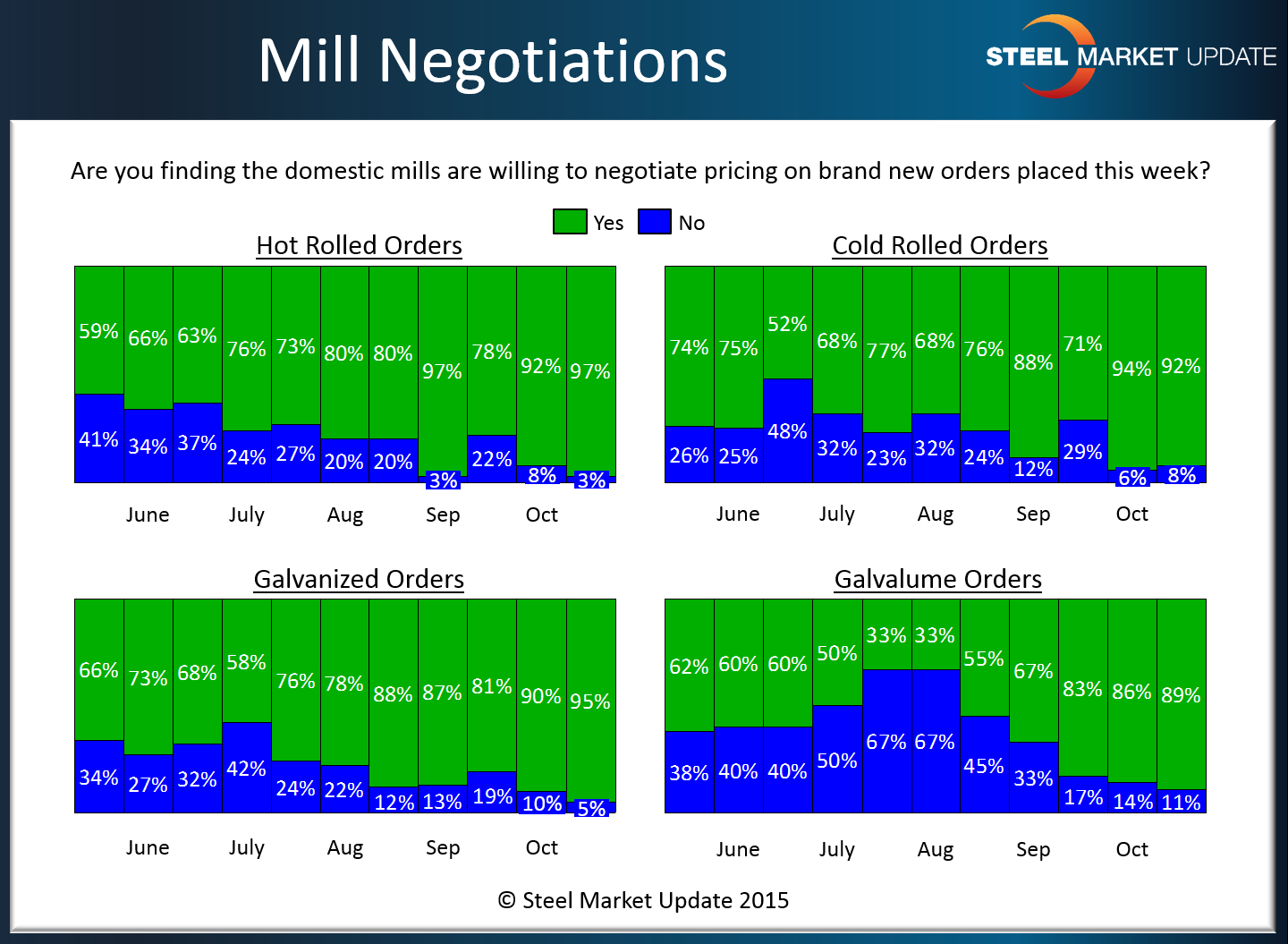SMU Data and Models

Steel Buyers Tell SMU: Steel Mills Anxious to Negotiate Pricing
Written by John Packard
October 22, 2015
SMU spoke with a service center executive earlier today. During our conversion this Midwest based service center expressed his opinion regarding the ability to negotiate domestic steel prices in the current market environment when he told us, “I am beginning to think that with a firm bid you could get a better deal domestically than what you would get if you went foreign.”
In our HARDI galvanized steel conference call held earlier this week we heard from a number of wholesalers who reported the mills as, “…more willing to negotiate and we are seeing prices that we have not seen since 2008.”
Those responding to our mid-October flat rolled steel market analysis this week did not express opinions regarding domestic versus foreign pricing. What they did agree on is the domestic steel mills are aggressively negotiating price on all flat rolled products.
Those respondents reporting the mills as negotiating hot rolled prices rose from 92 percent to 97 percent (meaning 97 percent of the respondents reported mills as negotiating pricing).
Cold rolled also remained above 90 percent with 92 percent reporting the mills as willing to negotiate CR spot pricing.
Galvanized rose from 90 percent to 95 percent.
Galvalume rose from 86 percent to 89 percent.
Here is how negotiations have trended since the beginning of June 2015.
A side note: The data for both lead times and negotiations comes from only service center and manufacturer respondents. We do not include commentary from the steel mills, trading companies or toll processors in this particular group of questions.
To see an interactive history of our Steel Mill Negotiations data, visit our website here.

John Packard
Read more from John PackardLatest in SMU Data and Models

SMU Scrap Survey: Sentiment Indices rise
Both current and future scrap sentiment jumped this month, though survey participants reported responses before key trade news was announced.

SMU Survey: Sentiment splits, buyers have better view of future than the present
SMU’s Steel Buyers’ Sentiment Indices moved in opposite directions this week. After rebounding from a near five-year low in late June, Current Sentiment slipped again. At the same time, Future Sentiment climbed to a four-month high. Both indices continue to show optimism among buyers about their company’s chances for success, but suggest there is less confidence in that optimism than earlier in the year.

SMU scrap market survey results now available
SMU’s ferrous scrap market survey results are now available on our website to all premium members. After logging in at steelmarketupdate.com, visit the pricing and analysis tab and look under the “survey results” section for “ferrous scrap survey” results. Past scrap survey results are also available under that selection. If you need help accessing the survey results […]

SMU flat-rolled market survey results now available
SMU’s latest steel buyers market survey results are now available on our website to all premium members. After logging in at steelmarketupdate.com, visit the pricing and analysis tab and look under the “survey results” section for “latest survey results.” Past survey results are also available under that selection. If you need help accessing the survey results, or if […]

SMU Survey: Sheet lead times stabilize, plate contracts
Mill lead times for sheet products were steady to slightly longer this week compared to our late June market check, while plate lead times contracted, according to steel buyers responding to this week’s market survey.

